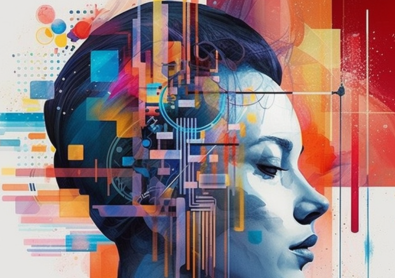Are you intrigued by the fascinating world of machine learning and its inner workings? Prepare for an exhilarating journey into this captivating field. Machine learning, a form of artificial intelligence (AI), leverages algorithms to enable machines to learn from data and enhance their performance through experience. Imagine a highly intelligent child who becomes better and better through practice. These models possess the ability to analyze and interpret data, ultimately making predictions—a crucial ingredient behind our favorite technological innovations!
Within machine learning, there are two primary approaches: supervised learning and unsupervised learning. Supervised learning resembles a teacher guiding a student, providing constructive feedback along the learning journey. On the contrary, unsupervised learning mimics a child exploring the world independently, discovering patterns without any guidance or map.
Whether you’re training a machine for face recognition or trying to understand complex data analysis, machine learning holds the key to unlocking the full potential of AI and AI Art in specific.
Types of supervised learning algorithms
If you’ve ever wondered how machines acquire the ability to make informed decisions based on data, you’re in the right place. Supervised learning is one of the most popular and widely used types of machine learning algorithms today. This approach involves training the model using labeled data, where each example is already classified or labeled, allowing the machine to map input data to the correct output.
There are two main types of supervised learning algorithms: classification and regression.
Classification algorithms:
Classification algorithms categorize data into specific classes or categories based on distinct features, similar to sorting socks into designated piles by color. These algorithms learn from labeled data and leverage patterns within the input features to predict the class or category to which new, unlabeled data belongs. Some popular classification algorithms include:
- Decision Trees
- Random Forests
- Logistic Regression
- Support Vector Machines (SVM)
- Naive Bayes
Regression algorithms:
Regression algorithms, on the other hand, aim to predict continuous values based on input features. They analyze the relationship between the input variables and the corresponding continuous output values. For instance, predicting the weather based on historical data relies on regression algorithms. Examples of regression algorithms include:
- Lineare Regression
- Random Forest Regression
- Support Vector Regression (SVR)
- Polynomial Regression
- Gradient Boosting Regression
By employing these supervised learning algorithms, machines can make accurate predictions and classifications based on labeled data. Understanding the distinction between classification and regression algorithms allows us to apply the most suitable approach in various problem domains. Whether it’s sorting data into categories or predicting future values, supervised learning algorithms provide a robust tool for harnessing the potential of machine learning.
Types of unsupervised learning algorithms
In the realm of machine learning, unsupervised learning takes center stage. Unsupervised learning operates with unlabeled data to train models, allowing algorithms to identify patterns and relationships without any prior knowledge or labeling. By providing the algorithm with a dataset, it discovers patterns or relationships among the data points.
Several main types of unsupervised learning algorithms include: clustering, principal component analysis (PCA), and association rule mining.
Clustering algorithms:
Clustering algorithms group data points based on similarities, aiming to uncover meaningful patterns or clusters within the data. Examples of clustering algorithms include:
- K-means clustering
- Hierarchical clustering
- DBSCAN (density-based spatial clustering of applications with noise)
- Gaussian mixture models (GMM)
Principal component analysis (PCA):
PCA reduces data dimensionality by identifying the most important features. It recognizes the principal components that explain the maximum variance in the data, making it valuable for visualization, data compression, and feature selection.
Association rule mining:
Association rule mining discovers patterns in transactional data, with algorithms identifying frequently occurring item sets and generating rules based on their co-occurrence. Popular association rule mining algorithms include Apriori and FP-Growth.
Unsupervised models and AI art
Unsupervised learning algorithms have revolutionized AI art, opening new doors for creativity and innovation! By learning from unlabeled data, these algorithms unveil hidden patterns and relationships, empowering AI art generators to create truly unique and captivating artworks. To delve deeper into the captivating world of AI art and discover how unsupervised learning algorithms are integrated, check out our article “How AI Art Generators Use Unsupervised Learning” here.
The future of AI art is boundless, holding infinite possibilities for artistic expression and exploration as technology continues to advance. Machine learning, encompassing both supervised and unsupervised learning, plays a crucial role in driving AI’s progress and unlocking its full creative potential!
Download AppRelated Resources
10 Best AI Avatar Generators to Try
Generated via Midjourney Discover the top AI avatar generators and create your unique digital persona with ease. In our rapidly…
Read MoreAI Joins Shutterstock’s Image Library
A Brave New World of Creative Imagery Credit: Shutterstock In a world that's bursting at the seams with visuals and…
Read More6 AI Photo Editing Apps You Need to Know About
Enhance Your Photos in a Snap Generated via Midjourney Photography enthusiasts have experienced their fair share of struggles when it…
Read MoreAI Gaming: A New Era of Play
Transforming Gaming as We Know It [video width="1600" height="900" mp4="https://aiartmaster.co/wp-content/uploads/2023/10/video-game-loop-1.mp4" loop="true" autoplay="true"][/video] Video Credit: Jitao Zhou/Rikkyo University Gaming…
Read MoreReal or Fake? How to Spot an AI-Generated Image
Detecting Digital Image Forgeries In today's world, AI is advancing so rapidly that distinguishing real photos from fake ones can…
Read MoreThe 10 Top AI Trends for 2024
Generative AI Trends for 2024: Shaping a New Era As we kickstart the year 2024, it's time to prepare for…
Read MoreTraditional Art Vs Digital Art: Canvas Vs Code
In the vast realm of artistic expression, two mediums have emerged as prominent contenders: traditional art and digital art. While…
Read MoreMachine Learning Core Components
Representation: Translating Data into Meaning Data representation is the linchpin of machine learning. It's the intricate process of converting raw,…
Read More

